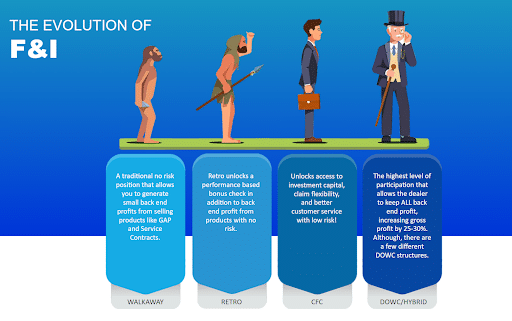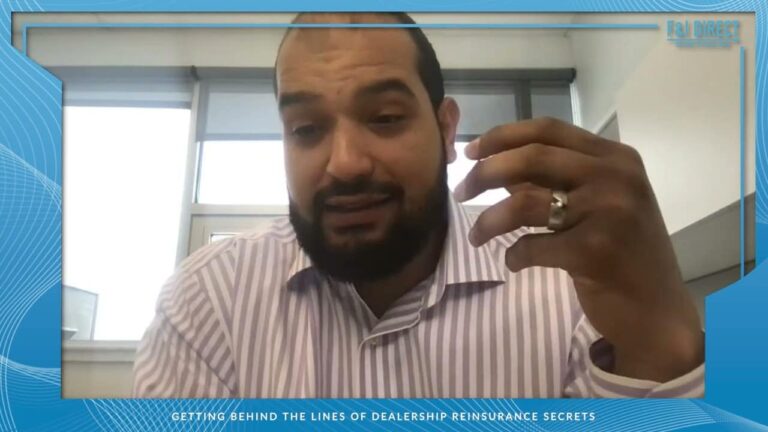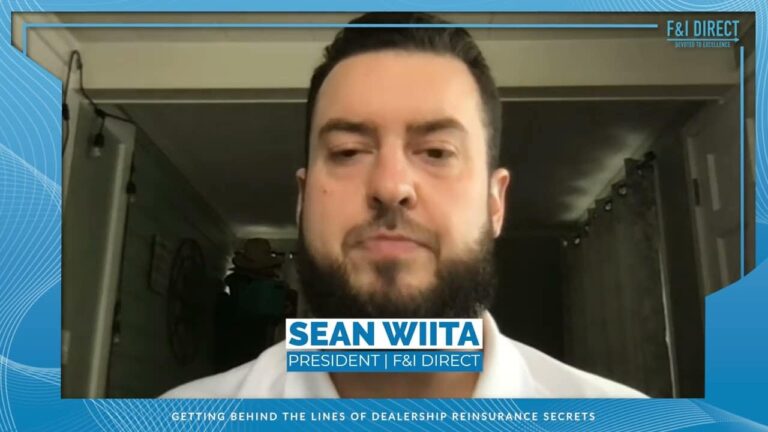Welcome to F&I Direct’s Exploration in to the World of Dealership Reinsurance
In a revealing session of “Behind the Lines of Dealership Reinsurance,” Sean Wiita, President of F&I Direct and Al Salas, Owner of Eco Auto dive deep into the intricacies of dealership reinsurance, shedding light on structures and strategies that can significantly impact a dealership’s financial landscape.
Understanding the Different Structures of Dealership Reinsurance
Walk Away Program
Ideal for dealers who prefer a risk-free approach, the Walk Away Program suits high-risk vehicle sales or dealers at the initial growth stage. It simplifies profit generation from F&I products without delving into complex reinsurance risks.
Retro Program
A stepping stone into dealership reinsurance, the Retro Program allows dealers to benefit from underwriting profits without bearing risks. This program is particularly beneficial for newcomers in the dealership landscape, offering a balance of profit participation and risk management.
Controlled Foreign Corporation (CFC)
For dealers seeking to balance risk and reward, CFCs offer participation in insurance profits and investment income. This structure requires careful consideration of dealership goals and risk appetite, making it suitable for more established dealers.
NCFC vs. Protective DOWC
With the evolving dealership reinsurance landscape, Protective DOWC (Dealer Owned Warranty Company) is emerging as a more robust and tax-efficient structure compared to NCFC (Non-Controlled Foreign Corporation). Protective DOWC offers greater control and flexibility in managing warranty programs, making it an attractive option for high-volume dealers.
Is Reinsurance Profitable for Auto Dealership?
The profitability of reinsurance hinges on several factors:
- Dealer’s Risk Appetite: Choosing the right structure, whether it’s a risk-free Walk Away Program or a more involved CFC, determines the profitability scale.
- Volume and Type of Sales: High-volume dealerships might find more value in structures like DWC due to the scale of operations and potential tax benefits.
- Long-Term vs Short-Term Goals: Dealers must align their reinsurance choices with their financial objectives, whether focusing on immediate cash flow or long-term wealth accumulation.
Key Takeaways for Dealers
Match Reinsurance Structure with Business Stage:
Newer dealers might prefer Walk Away or Retro programs, while established ones could benefit more from CFC or DWC structures.
Tax Implications:
Understanding the tax benefits and obligations of each reinsurance structure is crucial in maximizing profitability.
Customization and Felxibility:
Dealers should seek structures that offer control over claims, coverage, and premiums, adapting to their unique business needs.
Conclusion
In conclusion, dealership reinsurance offers a spectrum of opportunities for dealers to enhance their profitability and control over F&I products. As Sean Wiita and Al Salas highlighted, the key is in understanding and choosing the right structure aligned with the dealership’s goals and risk tolerance. Stay tuned to “Dealer Reinsurance Secrets” for more insights into making the most of dealership insurance programs. For a full Dealership Diagnostic of your dealerships profitability, schedule a time with us here.
About the Authors
Sean Wiita and Al Salas bring years of expertise in dealership reinsurance, offering valuable insights and advice for dealers navigating this complex yet rewarding field.





